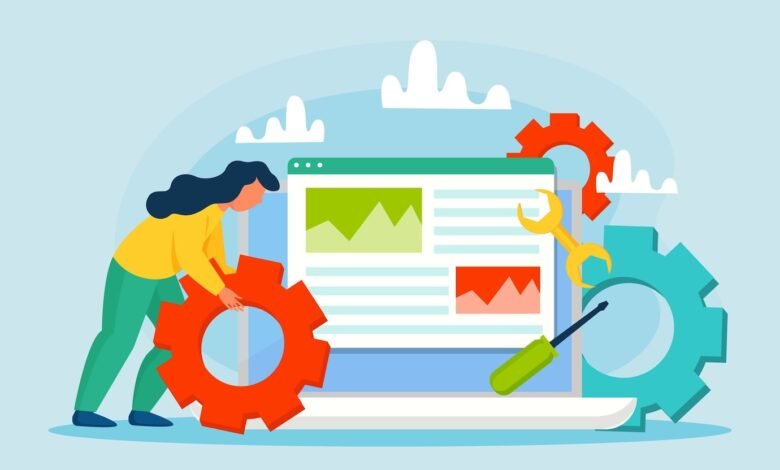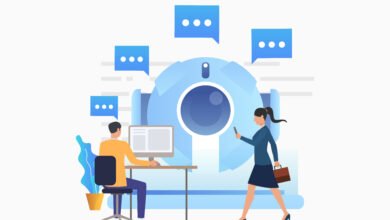Essential Maintenance Services for Educational Websites

In today’s fast-paced digital world, educational institutions are increasingly relying on their websites to connect with students, faculty, parents, and the wider community. These websites serve as the cornerstone of communication, collaboration, and learning. However, for an educational website to remain effective, engaging, and secure, it requires regular maintenance. Just as a school or university ensures its classrooms, libraries, and facilities are well-maintained, a website also needs ongoing attention to remain functional and effective.
This article explores the importance of website maintenance and highlights the essential maintenance services that educational institutions should consider to ensure their website operates smoothly. Moreover, we will discuss the role of website maintenance packages and why they are essential for maintaining a high-quality online presence.
Why Website Maintenance Is Important for Educational Institutions
A website is more than just a digital brochure; it is a hub for communication, learning, and engagement. In the case of educational institutions, websites often include features like student portals, online course materials, event calendars, registration forms, and more. These features are vital to the day-to-day operations of schools, colleges, and universities. Neglecting regular maintenance can lead to a range of issues, such as:
Broken Links and Errors: Links that don’t work or pages that fail to load create a poor user experience. Visitors, whether students or faculty, will be frustrated and may not return.
Outdated Information: Educational websites often include course catalogs, faculty information, and event schedules. Keeping this content up to date is crucial for the website’s credibility.
Security Vulnerabilities: Educational websites, like any other, are targets for cyber-attacks. Regular security updates and backups are essential for protecting sensitive data.
Slow Performance: A slow-loading website can drive users away. Websites need to be optimized to deliver fast, responsive experiences.
Thus, regular maintenance ensures the site stays functional, secure, and relevant to its users.
Essential Website Maintenance Services for Educational Websites
Content Updates and Management
Content is at the heart of every educational website. Whether it’s uploading new course materials, updating news, or adding new events, keeping content fresh is crucial. As an educational institution, you want to provide the most current and relevant information to your audience. Content updates can include:
- New courses or programs being offered.
- Changes to the faculty or staff list.
- Modifications to school policies or guidelines.
- Announcements regarding events, holidays, or important dates.
A website that is constantly updated with new content fosters engagement and gives users a reason to return. Moreover, educational websites often rely on accurate and timely information, and regular content updates are an essential maintenance service to ensure everything is current.
Security Updates and Backups
Educational institutions store a wealth of sensitive data, including student records, academic performance, and personal information. As such, ensuring the security of the website is paramount. Regular security updates are essential to protect against vulnerabilities that hackers may exploit. Key security maintenance services include:
Installing Software Patches: These patches are released by content management system (CMS) providers like WordPress or Joomla. They address known security vulnerabilities and improve the overall performance of the website.
SSL Certificate Renewal: SSL certificates secure the communication between users and the website, making it crucial for maintaining trust. Regular renewal is essential to ensure the continued safety of data.
Malware Scanning and Removal: Cybercriminals often target websites with malware that can corrupt files or steal sensitive information. Regular scans for malware, followed by its immediate removal, help ensure the website remains secure.
Regular Backups: Backups are essential for protecting data in case of technical failure, cyber-attacks, or accidental deletion. Websites should have automated backups set up to restore lost or corrupted data easily.
Investing in these security measures through website maintenance packages helps avoid potential security breaches and data losses that could damage the reputation and credibility of an educational institution.
Performance Monitoring and Optimization
A slow website can be a major deterrent for visitors, leading to a high bounce rate and frustrated users. Educational websites often contain large files, such as videos, research papers, and interactive learning materials. If these elements aren’t optimized, they can slow down the entire site.
Regular performance monitoring is essential to ensure that all elements are loading quickly and efficiently. Optimization services may include:
Image Compression: Large images can significantly slow down load times. Compressing images while maintaining quality improves website speed.
Database Optimization: Over time, databases accumulate unnecessary data, which can cause delays. Routine database cleaning helps maintain website performance.
Caching: Implementing caching strategies ensures that frequently accessed data is stored for quick retrieval, thus improving page load times.
Performance optimization not only makes the user experience smoother but also improves search engine rankings, as search engines favor fast-loading websites.
User Experience (UX) Testing and Design Updates
Educational websites must offer an intuitive user experience to ensure that visitors can easily navigate the site and access the information they need. Regular UX testing helps identify potential usability issues, such as:
- Poor navigation that makes it difficult for users to find information.
- Inaccessible features for users with disabilities.
- Non-mobile-friendly design that creates issues for users accessing the site via smartphones and tablets.
Additionally, as design trends evolve, it is essential to keep the website’s look fresh and modern. This doesn’t mean a complete redesign every year, but small tweaks like updated color schemes, new icons, and streamlined layouts can enhance the user experience.
SEO Optimization
For educational institutions, visibility on search engines is key to attracting prospective students, faculty, and parents. SEO (Search Engine Optimization) maintenance involves regularly optimizing the website to rank higher on search engines like Google. Services that fall under SEO maintenance include:
Keyword Optimization: Regular updates to ensure that relevant keywords are used in content, metadata, and headings.
Technical SEO: This includes checking site speed, ensuring mobile-friendliness, and fixing any crawl errors that could prevent search engines from indexing the site correctly.
Link Building: Establishing high-quality backlinks to the website helps improve its domain authority and search engine ranking.
By integrating SEO optimization into website maintenance services, educational websites ensure they are easily discoverable by potential users.
The Role of Website Maintenance Packages
Website maintenance packages are an excellent way for educational institutions to streamline their website management process. These packages typically include a set of services that cater to the specific needs of the institution. Whether it’s routine updates, security patches, content management, or technical optimization, a website maintenance package bundles these essential services into one manageable contract.
By investing in a maintenance package, educational institutions can ensure their website is continuously monitored and maintained, which helps reduce the risk of downtime, security breaches, and performance issues. Packages are often tailored to suit the size and complexity of the website, offering different levels of support based on the institution’s needs.
Conclusion
Maintaining an educational website is not just a matter of occasional updates—it is an ongoing process that ensures the site remains functional, secure, and effective in serving its users. From content updates and security patches to performance optimization and SEO, regular maintenance is essential for keeping the website running smoothly. With the help of website maintenance services and website maintenance packages, educational institutions can focus on their core mission of providing quality education while ensuring their website is a reliable and secure resource for all users.
By investing in these services, schools, colleges, and universities can maintain a positive online presence, promote engagement, and ultimately support the learning experience for their community.



